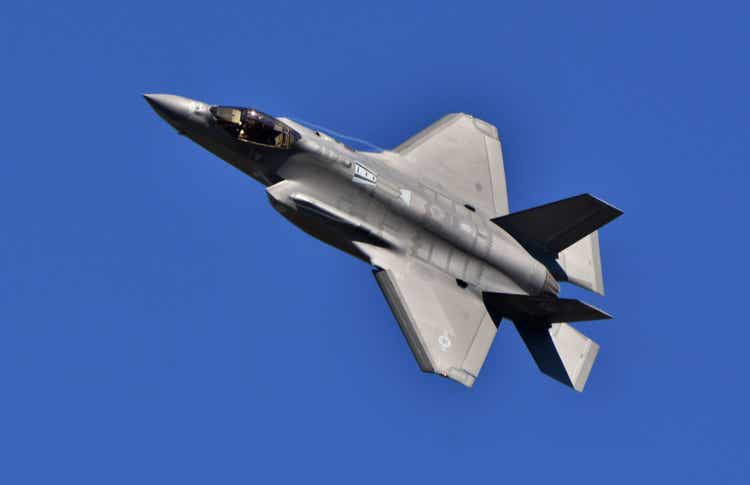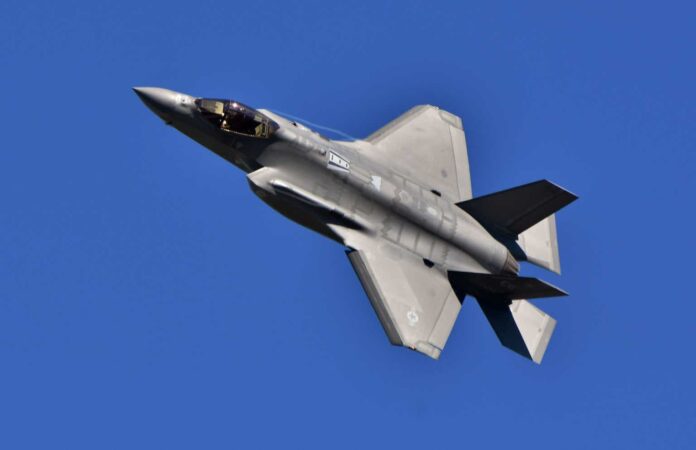Michael Fitzsimmons
Lockheed Martin Corporation (NYSE:LMT) restarted F-35 deliveries in July this year. The delivery restart came after a year-long delivery pause following problems with the TR-3 upgrade for the F-35. During that time, Lockheed Martin kept building F-35s at the normal rate building a significant inventory. In my previous report, I marked the F-35 delivery restart as a driver of cash flow. However, the Pentagon is withholding $5 million out of an estimated $7 million in delivery payments for any F-35 that does feature a full TR-3 upgrade. In this report, I will be discussing what the TR-3 upgrade is, estimate the inventory of delivered jets and the associated cash flow shifts due to the delivery payments being significantly reduced as well as the possible impact on price targets.
What Is The TR-3 Upgrade For The F-35?
The TR-3 upgrade or Technology Refresh 3 is a upgrade package to the F-35 that provides the F-35 with more computer memory, processing power and displays allowing the fighter jet to better identify targets, improves its electronic warfare capabilities and carry more weapons. This TR-3 upgrade serves as the foundation of the Block 4 capabilities of the F-35. The development of the TR-3 upgrade has been a costly one running at least $1 billion over budget.
While the F-35 deliveries have restarted, the problem has become that the current TR-3 implementation is a truncated one. It is not a combat ready TR-3 upgrade and the Joint Program Office will withhold a portion of the delivery payment on each of the fighter jets that does not feature the full upgrade which is not expected until next year.
Modeling The F-35 Delivery Payment Impact On Lockheed Martin Stock Price
For 2024, the guidance provided by management, as well as the analyst estimates on free cash flow seem to be consistent with the assumption that delivery payments would be minimal. So, I don’t see any major impact there and if F-35 capabilities are up to par next year, I would say that the price targets I earlier outlined continue to hold.
However, if the deliveries with the full TR-3 upgrade shift into 2026, there would be some pressure. For the second half of the year, Lockheed Martin expects to deliver 75 to 110 fighter jets with around 90% of the deliveries being in truncated TR-3 configuration. That would indicate that by year-end, the number of airplanes in inventory would be between 87 and 118 fighter jets with the backlog being burned off by 2026.
For 2024, there would be $340 million to $495 million in delivery payments that would be delayed. For 2025, there would be between 136 and 157 deliveries on which payment would be delayed in case the TR-3 upgrade is not fully ready at a reasonable time in 2025. What this essentially would mean is that that the withheld payments for 2024 and 2025 would total $1.125 billion to $1.175 billion which would be flowing into 2026.
I have modelled this into my stock screener as a $1.15 billion pressure, which is the mid-point of the potential cash flow slip and added that into 2026. With the cash flow slipping, we can already know that whatever pressure there is in 2025 would be compensated for in 2026. While analysts are putting significant emphasis on the delivery payments, the reality is that a one-year slip would barely move the needle for Lockheed Martin despite the amount being substantial as measured against cash flow. For 2025, we would see a impact on the share price of $2.66 to $3.64 which represents just 0.2% to 0.5%. Due to the fact that the price targets are based on an enterprise valuation, this wouldn’t be fully won back in terms of price targets for 2026, but around half of the share price pressure could be added to the upside in 2026.
Conclusion: Possible F-35 Cash Flow Pressure Is Inconvenient But Not Major
The $1.15 billion cash flow slip, which, I believe, would be the worst-case scenario would not provide a substantial pressure on the established price targets and I believe that is something to keep in mind. Withholding payments has been a focus point of analysts and the media, but calculating the impact through does not provide a significant pressure on the price target, and it could very well be the case that Lockheed Martin gets a combat-ready TR-3 rolled out next year that further reduces the cash flow impact. So, I feel comfortable with the buy rating and stock price targets I have put now.



